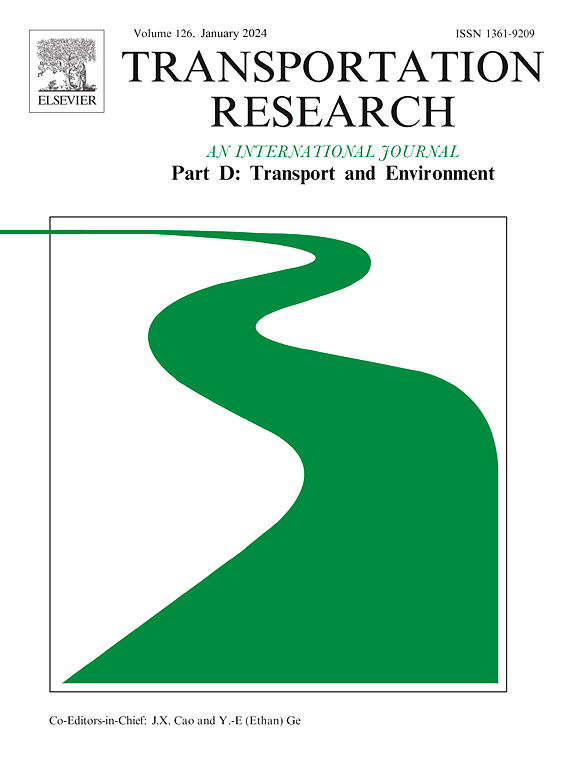Who buys public transport accessible housing? Residential sorting in the Oslo region
IF 7.3
1区 工程技术
Q1 ENVIRONMENTAL STUDIES
Transportation Research Part D-transport and Environment
Pub Date : 2025-02-01
DOI:10.1016/j.trd.2025.104595
引用次数: 0
Abstract
This article investigates whether public transport (PT) accessibility is related to socioeconomic residential sorting in the Oslo region. There is widespread concern that PT services contribute to gentrification and exclusionary processes, although empirical evidence for this is limited. This study uses detailed dwelling transaction data and estimates conditional logit models on residential purchases among different income groups. The results show that the effect of PT accessibility on dwelling selection varies as the life course progresses. Families with children and older households display lower effects of PT accessibility on residential choice than young, childless households. At the same time, PT accessibility increases the likelihood of dwelling purchase more for high-income households than for households with a lower income. These results confirm that PT accessibility is a valued and limited residential asset, one that households with more economic resources are better able to obtain.
求助全文
约1分钟内获得全文
求助全文
来源期刊
CiteScore
14.40
自引率
9.20%
发文量
314
审稿时长
39 days
期刊介绍:
Transportation Research Part D: Transport and Environment focuses on original research exploring the environmental impacts of transportation, policy responses to these impacts, and their implications for transportation system design, planning, and management. The journal comprehensively covers the interaction between transportation and the environment, ranging from local effects on specific geographical areas to global implications such as natural resource depletion and atmospheric pollution.
We welcome research papers across all transportation modes, including maritime, air, and land transportation, assessing their environmental impacts broadly. Papers addressing both mobile aspects and transportation infrastructure are considered. The journal prioritizes empirical findings and policy responses of regulatory, planning, technical, or fiscal nature. Articles are policy-driven, accessible, and applicable to readers from diverse disciplines, emphasizing relevance and practicality. We encourage interdisciplinary submissions and welcome contributions from economically developing and advanced countries alike, reflecting our international orientation.

 求助内容:
求助内容: 应助结果提醒方式:
应助结果提醒方式:


